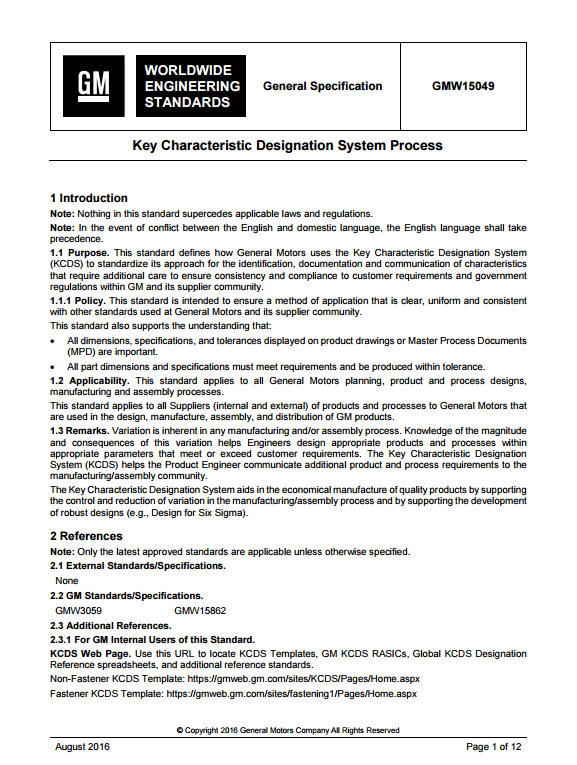GM規格 GMW15049, 4th Edition: 2016: Key Characteristic Designation System Process
※当ウェブ・ショップに掲載のない規格につきましては、別途お問合せ下さいませ。
※掲載の規格は、当ウェブ・ショップに掲載時点で確認できた最新版でございます。
最新の発行状況につきましては受注時に改めて確認をさせて頂きますので予めご了承下さい。
Description
Introduction
Note: Nothing in this standard supercedes applicable laws and regulations.
Note: In the event of conflict between the English and domestic language, the English language shall take precedence.
Purpose. This standard defines how General Motors uses the Key Characteristic Designation System (KCDS) to standardize its approach for the identification, documentation and communication of characteristics that require additional care to ensure consistency and compliance to customer requirements and government regulations within GM and its supplier community.
Policy. This standard is intended to ensure a method of application that is clear, uniform and consistent with other standards used at General Motors and its supplier community. This standard also supports the understanding that:
- All dimensions, specifications, and tolerances displayed on product drawings or Master Process Documents (MPD) are important.
- All part dimensions and specifications must meet requirements and be produced within tolerance.
Applicability. This standard applies to all General Motors planning, product and process designs, manufacturing and assembly processes. This standard applies to all Suppliers (internal and external) of products and processes to General Motors that are used in the design, manufacture, assembly, and distribution of GM products.
Remarks. Variation is inherent in any manufacturing and/or assembly process. Knowledge of the magnitude and consequences of this variation helps Engineers design appropriate products and processes within appropriate parameters that meet or exceed customer requirements. The Key Characteristic Designation System (KCDS) helps the Product Engineer communicate additional product and process requirements to the manufacturing/assembly community.
The Key Characteristic Designation System aids in the economical manufacture of quality products by supporting the control and reduction of variation in the manufacturing/assembly process and by supporting the development of robust designs (e.g., Design for Six Sigma).











